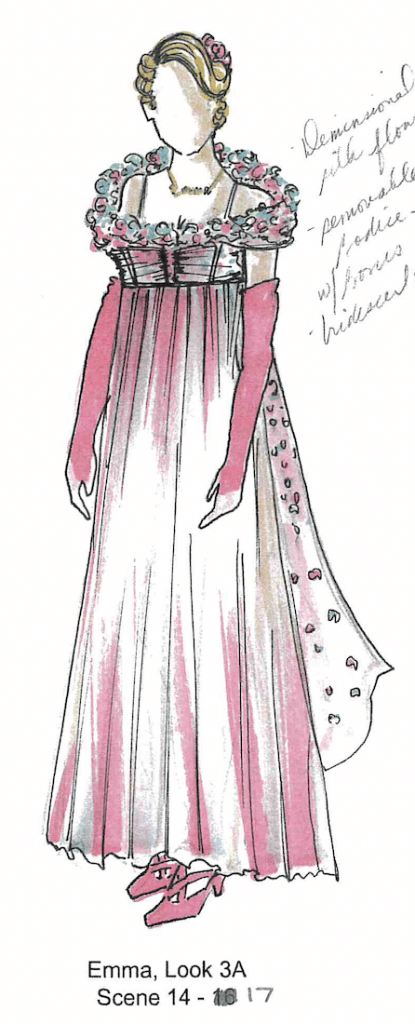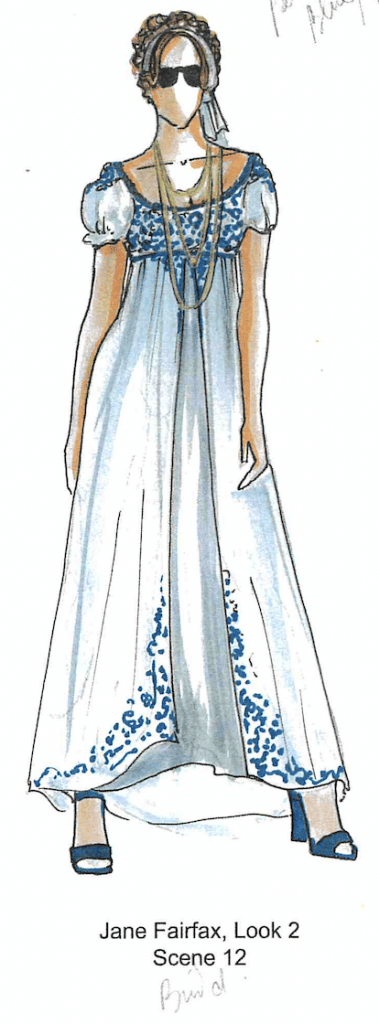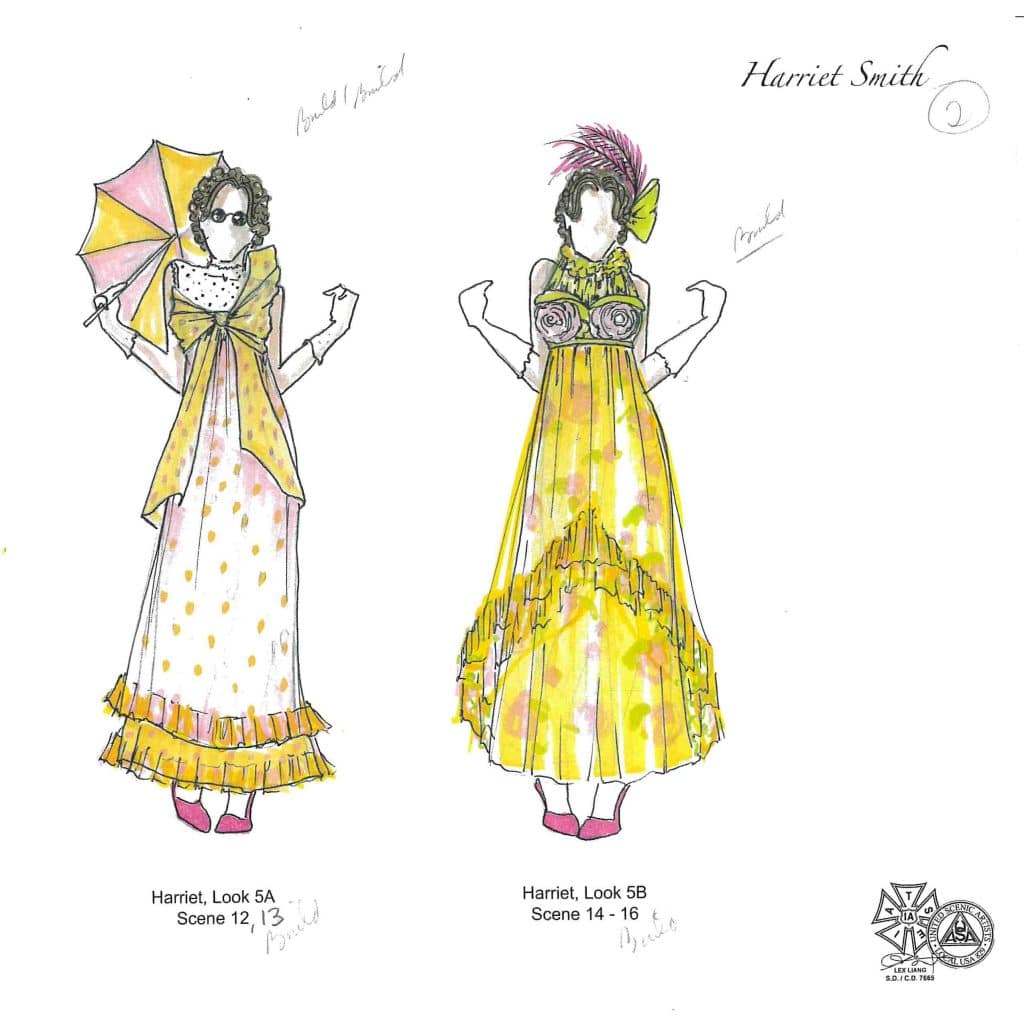The concept of forward movement, matchmaking, and feminism in a time of regency ideals, is a central theme in both Jane Austen’s “Emma” and Kate Hamill’s adaptation.
The titular character Emma Woodhouse embodies this idea in her actions through a similar modern influence, a dance around traditional values that is mimicked by other characters in the play. It was thus important to capture this movement in one of the most visually accessible forms of expression: fashion.
Lex Liang, scenic and costume designer for “Emma”, put a lot of thought into how he would balance the modern feel of the play with the original setting. Modern pieces, such as denim jackets and skinny jeans, are worn by the characters in tandem with ball gowns and coattails, and yet they feel at home on the stage they created.
“In order for the boredom of a regency girl to make sense,” Lex explained, “we needed to still embrace that period aesthetic.” Lex Liang’s process for designing the costumes was to create a scale for all of the characters to fall on.
“We have contemporary neo-regency on one side and period with a capital P on the other,” Lex explains. “You’d have somebody like the servants or folks who are not of great means on that Period end of the spectrum.” These characters will wear pieces that are more traditional to the original time period. “Then as we get into families that have a little bit more wealth and a little more means, they have accounts to feed their boredom.”
Of course, one of the most important decisions was what Emma Woodhouse would wear throughout the production. “I knew right off the bat after speaking with Director, Meredith McDonough, and Playwright, Kate Hamill, that we really wanted to lean into this sort of stereotypical girly pink for Emma,” Lex said. Although Emma is seen in several other colors throughout the play, pink remains her signature.
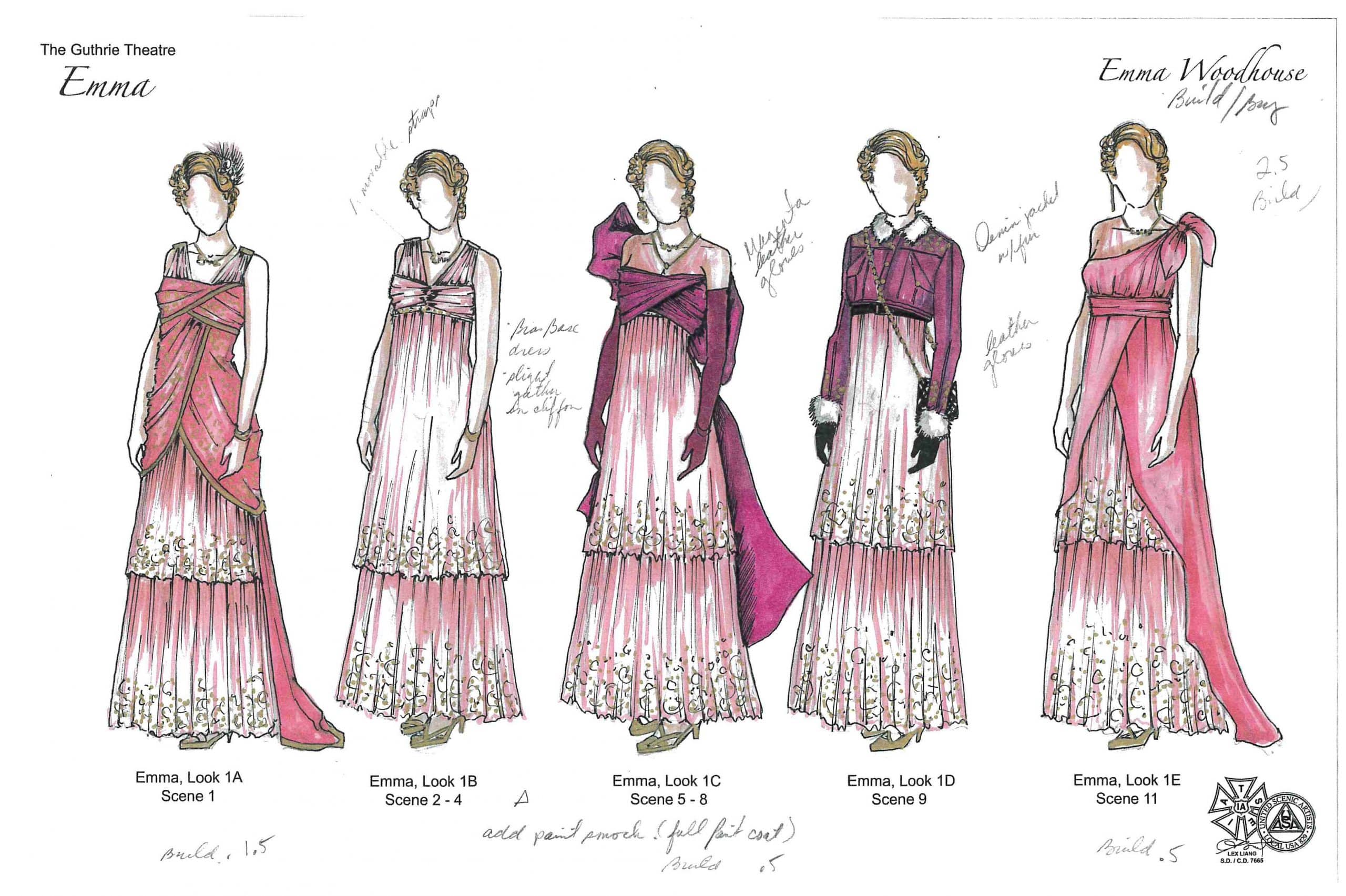
Both technical and literary analysis was needed to plan Emma’s costumes. She has the highest number of costume changes in the play and yet the text requires her to be on stage most of the time. Since she can’t leave the stage for a quick change, layering was used to create her unique looks.

“Her first base dress,” Lex shared, “we overdressed that and styled it in four to five different ways in Act I. It’s a very different look but she’s wearing the same dress.” This was a functional yet creative way to capture Emma’s personality.
“This play is really about an incredibly intelligent, and for the time over-educated, woman who then has nowhere to go with all of that stuff,” Lex said. Balancing Emma’s education with her personality was key in making the designs. Emma meddles. She is a matchmaker who is very confident in her abilities. But her skills sometimes don’t work out as she intends, such as with Harriet Smith, who she takes under her wing. This is expressed visually through additional shifts in costume.
“Once Emma gets her hands on [Harriet], we see an extreme arc where she takes what Emma’s given her and runs with it and goes way too far,” Lex explained. “We see Harriet go from sort of a very simple but elegant country girl to these over-the-top, almost clownlike gestures in her clothing, thinking that it is the latest fashion.”
The other characters that grace the stage in “Emma” receive similarly nuanced treatment in the creation of their costumes. In addition to combining regency and modern clothing, colors were used very intentionally to differentiate between characters.
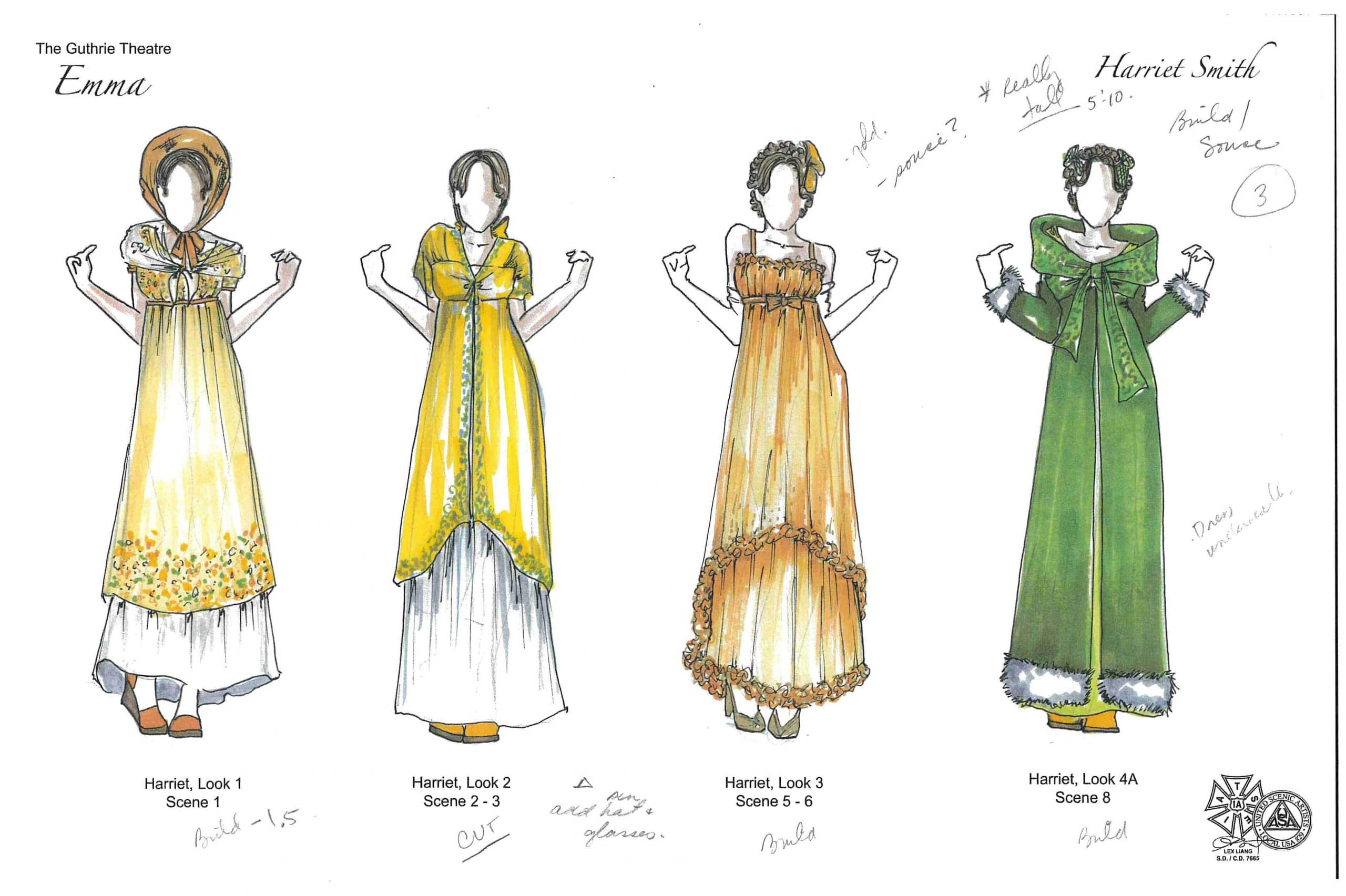
“For the other characters, it’s really just finding a balance of stage pictures,” Lex added. To do this, colors and patterns that would have been more expensive to produce were added to the designs. “Mr. and Mrs. Bates are more traditional, so we’re keeping to a more periodic specific palette; rusts and soft reds, etc.”
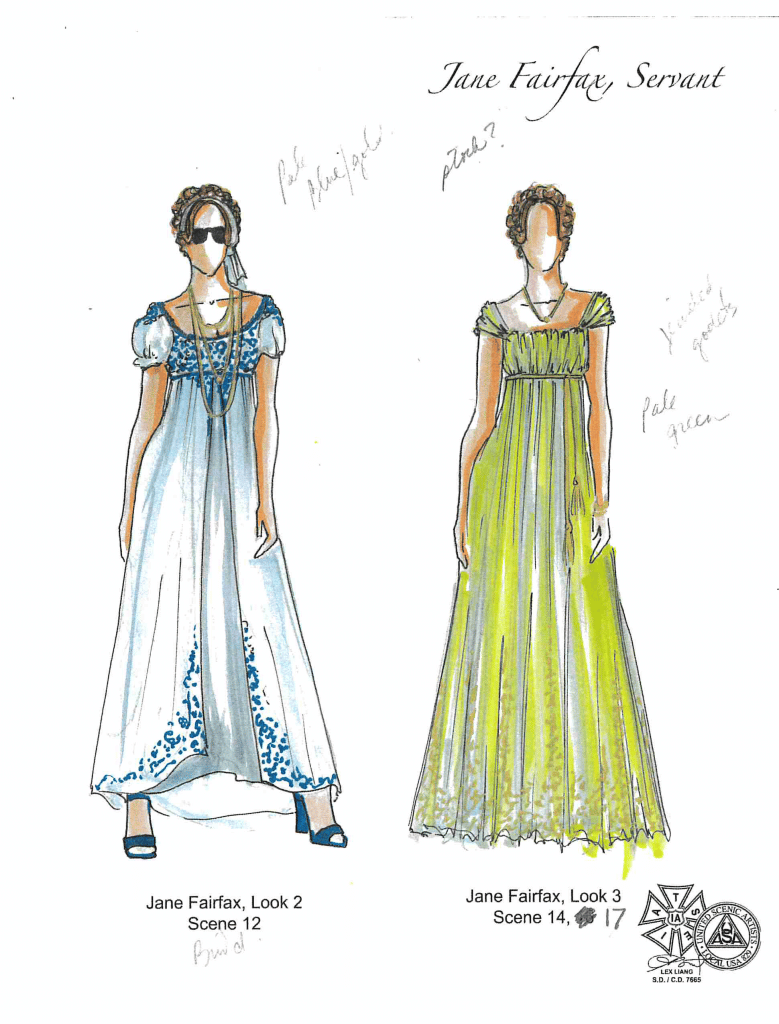
“In theater, the design elements and disciplines are storytelling devices,” Lex said. “The last bit of the process is to find the poetry in the clothing, in the scenery. This makes it an artistic choice.”
Whether you are new to the story or have loved the characters for decades, Kate Hamill’s adaptation and modern touches to the beloved play will welcome and delight you.
Come and see the gorgeous costumes for yourself! “Emma” by Kate Hamill based on the novel by Jane Austen is on stage November 16 – December 4.

